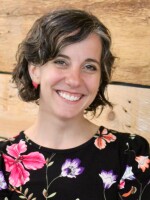Fall isn't just the season of foliage in Vermont — it's also prime time for bird watching. Fall is migration season for birds, which makes it a great time to grab the binoculars and head outside. And if you're trying to catch a glimpse of some of the wildlife before winter, "Bird Diva" Bridget Butler has some tips.
Vermont's fall birds:
Here are some of the birds talked about on today's episode you may be able to catch around Vermont this season:
Tips for fall birding:
Raptor season: October in Vermont is raptor season. Butler said one way to spot the turkey vultures or hawks could be to head up to Mt. Philo, settled into the grass, look up and wait. "Further south in Vermont, mid-September through like the second week in October is really nice to go ... lay down and look up at the sky and watch the raptors go over," Butler says.
Looking for loons? Waterfowl like loons and ducks are common in Vermont this time of year. Butler says waterfowl are great to find this season because they don't move around much. Loons, which have been considered endangered in the state in the past, should be out and about this fall — mostly young ones. Butler recommends Metcalf Pond or other small, inland ponds to spot these birds. Other waterfowl like ducks and mergansers are common, too, and fun to look for this season. "I love those birds because they're big. And they don't move around a lot," Butler says.
Nests and feeders: As colder weather comes in, Butler says it's a good time to clean out those nest boxes before spring — the empty houses may even help shelter chickadees in colder temperatures. As for bird feeders, it might be best to wait for those cold months before putting them out — Butler recommends waiting even until the first snowfall to avoid feeding unwanted wildlife. But if you aren't at risk of many bears, Butler says you can put feeders out and bring them in at night.
Stick season: Butler says one way you could spend stick season is to get into nest identification. Come November, plenty of nests will have been left behind, and learning how to identify them can help you "get to know who's been breeding on your landscape," Butler says. Butler recommends the Peterson Field Guide To North American Bird Nests, an updated nest identification book.
Wanting to get involved in the birding community? Butler recommends resources like Facebook groups (Birding Vermont is one), joining the Vermont Bird listserv out of UVM or hopping on free apps like eBird from Cornell University.
Broadcast at noon Thursday, Oct. 5, 2023; rebroadcast at 7 p.m.
Have questions, comments or tips? Send us a message.














